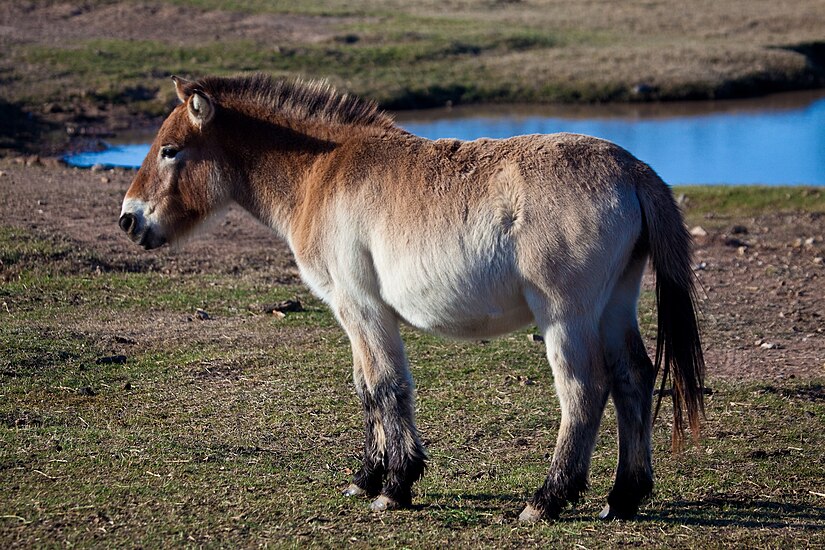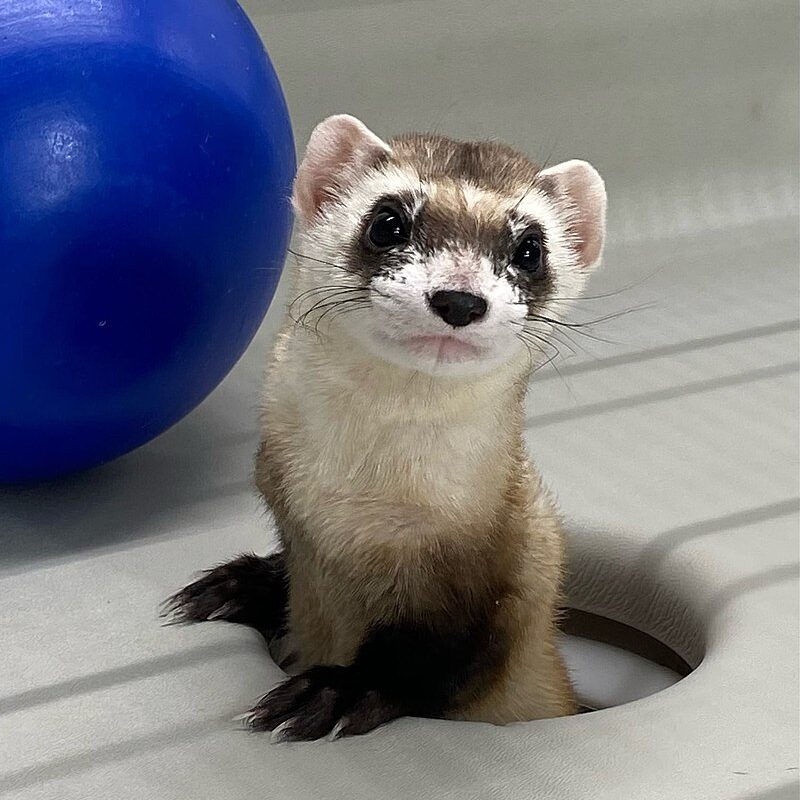“You must collect things for reasons you don’t yet understand” – Daniel Boorstin. These words have served as a slogan for the world’s oldest and first ever cryogenic storage facility for biodiversity conservation, The Frozen Zoo for nearly 50 decades.
The Frozen Zoo is located at the Beckman Center for Conservation Research, San Diego Zoo and hosts over 10,000 living cell cultures including oocytes, sperm cells, embryos and stem cells. These cells belong to nearly 1,100 critically endangered species and subspecies. The Zoo is also the only facility to possess the genetic material of the extinct species, po’ouli.
The founder, Kurt Benirschke’s tremendous knowledge and research in cryogenic preservation has paved the way for today’s conservationists to potentially save a plethora of species from the brink of extinction.
Kurt Benirschke, The Frozen Zookeeper
It was 10 years before ‘Conservation Science’ was even invented as a discipline and Kurt Benirschke, a German American geneticist decided to start collecting cells of endangered organisms in the hopes that they can one day be used to preserve biodiversity.
Initially, Benirschke started out as a physician who was looking into advancements in human reproductive technologies back in the 1970s and was curious to see if one can use assisted reproduction technologies in endangered species.
In 1976, he established a new research department at the San Diego Zoo called the Center for the Reproduction of Endangered Species. He eventually created a frozen collection of reproductive cells from highly endangered species which later came to be known as the ‘Frozen Zoo’.
The vision behind it was to use technologies which had not yet been invented to turn these preserved cells into living, breathing individuals that can someday repopulate the Earth.
Kurt was indeed very ahead of his time, as his research preceded some major genetic milestones such as DNA sequencing and the cloning of Dolly, The Sheep.
The Process of Cryopreservation
The process of wildlife cryopreservation involves extracting cells from threatened or endangered species which are then collected and frozen in liquid nitrogen containers at a temperature of – 195.5 °C.
At this temperature, all biological processes halt and the cells are essentially ‘frozen in time’. Once the cells are thawed back, they resume their processes.
The cell extraction process involves taking skin and tissue samples from animals either during their routine veterinary exams or postmortem. In case of postmortem, internal organs, gonads and eyeballs are extracted as well.
Most cell samples collected come from animals at the San Diego Zoo, but the facility houses samples collected from all over the world.
Living fibroblast cells are extracted from these tissues, which are grown and frozen in multiple vials. This genetic material is used to produce offspring, study species, and restore genetic diversity in unhealthy or scarce populations.
In 2019 alone, the Biodiversity Banking team added 75 new species to the Frozen Zoo, 80% of which included bird species.
Projects and Achievements
1) Sperm to the Rescue
Cell cryopreservation has turned out to be particularly useful in developing conservation through reproductive research. Offspring can be produced from germplasm through the use of in-vitro fertilization, artificial insemination and embryo transfer.
The San Diego Zoo has put its abundant germplasm collection to good use by successfully producing chicks of several pheasant species through artificial insemination of cryopreserved sperm.
Additionally, in vitro fertilization has been used to fertilize thawed cheetah sperm with a matured cheetah oocytes and vice versa to develop advanced stage embryos.
Using intracytoplasmic sperm injections, the zoo has also fertilized southern white rhino eggs with frozen sperm for 20 years.
2) Genome 10K
The zoo is a founder of the Genome 10K organisation which is comprised of a community of scientists worldwide working towards the preservation and understanding of species genetic diversity.
The organisation aims to sequence the genomes of 10,000 species in order to provide a new framework for biological inquiry. It facilitates projects such as Bat 1k, Bird 10k and the Vertebrate Genome Project to identify the genomes of as many animals as possible.
African elephants, two-toed sloths, and gorillas have benefited from whole genome sequencing projects at Genome 10K.
3) De-extinction of Northern White Rhinos
Apart from this exciting initiative, the zoo has made a commitment to prevent the extinction of northern white rhinos. There are only two northern white rhinos left in the world, which happen to be females.
As the southern white rhino is a genetically similar subspecies, it is being used as a model species to be a potential surrogate for northern white rhino offspring. Using reproductive technologies, 12 northern white rhino stem cell lines will be used to develop egg and sperm cells for embryo generation.
4) Przewalski’s Horse
In collaboration with ViaGen Equine and Revive and Restore, the San Diego Zoo is responsible for the first cloned Przewalski’s horse in 2020. The cloning was done using interspecies somatic cell nuclear transfer wherein the nucleus of a somatic cell is transplanted into a de-nucleated oocyte in order to produce offspring genetically similar to the somatic cell donor.
The somatic cell donor belonged to a Przewalski’s horse born in 1975 named Kuporovic. Kuporovic’s tissues were preserved at the Frozen Zoo for the purpose of promoting genetic diversity in future captive populations.
The somatic cell of Kuporovic was transplanted into the oocyte of a domestic horse. The generated embryo was carried by the domestic horse who gave birth to Kurt, a horse that possessed the rare DNA a long-deceased stallion.

5) The Story of Elizabeth Ann
Since its establishment, several other institutions have followed the footsteps of the Frozen Zoo in pursuing cryogenic conservation. In 2020, The Smithsonian Conservation Biology Institute successfully cloned a black-footed ferret named Elizabeth Ann using frozen cells from a ferret that died 30 years ago.
The efforts to revive black-footed ferrets began back in 1980s when the founder of San Diego Zoo, Oliver Ryder, preserved ferret tissue samples at the Frozen Zoo. Assumed to be globally extinct in the 1970s, the wild black footed ferret population is now comprised of approximately 350 individuals – all of which belong to a single colony from Wyoming. The cloning of Elizabeth Ann is said to be a source for much-needed genetic diversity for the inbred ferret population.

6) Illegal Trade
In addition to this, the Frozen Zoo is currently working towards identifying illegal primate and duiker specimens from the bushmeat trade by developing a bank of reference barcode samples.
Humanity’s Plan A for the Sixth Extinction?
With humanity undergoing its sixth mass extinction in biodiversity worldwide, the possibilities of saving endangered and extinct species through cryogenic preservation seem endless. However, in view of the rapid impacts of climate change, deforestation and habitat destruction, this plan of action comes with caution.
Conservation biologist Stuart Pimm stresses that the prime focus for wildlife conservation needs to be prevention and preservation, not resurrection. Otherwise, species survival will continue to be under global threat regardless of advancements in cryogenic preservation and cloning. Animals such as the woolly mammoth would not be able to survive in the current climate. This may well be the case for several other species, leading to reoccurrence in extinction.
It is crucial to restore mitigate conservation threats concerning land degradation, hunting, and human-wildlife conflict through political advocacy, ecological restoration, and stringent conservation action plans.
Help us Help Them! Think Wildlife Foundation is a non profit organization with various conservation initiatives. Our most prominent campaign is our Caring for Pari intiative. Pari is a rehabilitated elephant at the Wildlife SoS Hospital. 25% of the profits from our store are donated to the elephant hospital for Pari. Other than buying our wonderful merchandise, you could donate directly to our Caring For Pari fundraiser.
Written by: Namita Nalamala
